Try GOLD - Free
Odonata: An Ancient Order of Insect
Saevus
|December 2017 - February 2018
Apart from being beautiful creatures with prehistoric ancestry, dragonflies and damselflies are highly useful biological indicators of our ecosystem.

The order Odonata (Pneoroptera) represents two sub-orders Anisoptera (Dragonflies) & Zygoptera (Damselflies) and a link order Anisozygoptera, which represents only two species, among them one living fossil is found in the hilly areas of Darjeeling. Odonates are one of the dominating aquatic (larval stage) & terrestrial (mature stage) insects, flying over ponds, streams, rivers, forest and meadows, spending maximum time of their life around water bodies – the best place to observe them. Dragonflies are known as flying machines due to their extensive flying capabilities. These fliers can even fly backwards, move vertically like a helicopter or stop in turn in the midst of a rapid progression.

In general, dragonflies and damselflies are collectively known as Odonates. The differences between them are based on these basic morphological characters: (1) Dragonflies are strong fliers, fly fast and high but damselflies are comparatively weak fliers, fly over the ground or water. (2) In Dragonflies the fore wings and hind wings are unequal in size and the hind wings are broader at the base but in damselflies the fore wings and hind wings are approximately of same size and shape. (3) While perching, Dragonflies keep their wings open and spread out on both the sides of thorax while in damselflies they are held closed together and folded over the abdomen. (4) Dragonflies have a stouter abdomen whereas Damselflies have slim abdomens. Sometimes dragonflies and damselflies are confused with owlflies, mayflies & antlions but Odonates can be easily distinguished from these three flies for the presence of their antennae.

This story is from the December 2017 - February 2018 edition of Saevus.
Subscribe to Magzter GOLD to access thousands of curated premium stories, and 10,000+ magazines and newspapers.
Already a subscriber? Sign In
MORE STORIES FROM Saevus

Saevus
Staying ALIVE!
The importance of getting to the root causes of conflict with wildlife, is essential. Its mitigation will guarantee the very survival of all species.
8 mins
SAEVUS NOVEMBER 23 MARCH 24

Saevus
Frames from the WILD
A few amazing shots from a horde of incredible ones!
3 mins
SAEVUS NOVEMBER 23 MARCH 24
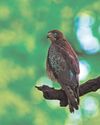
Saevus
WAKE UP!
A frightening thought a world without wildlife, mornings without birdsong, and all that we take for granted! We must realise the dangers threatening the beauteous green world and its inhabitants around us!
4 mins
SAEVUS NOVEMBER 23 MARCH 24

Saevus
Dolphin DILEMMA!
A crucial article to highlight the significance, and plight of Our riverine friends.
3 mins
SAEVUS NOVEMBER 23 MARCH 24
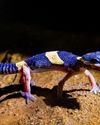
Saevus
Gecko Quest!
The authors take us on the trail of a gecko from West Bengal, through the hills of the Bankura district.
2 mins
SAEVUS NOVEMBER 23 MARCH 24
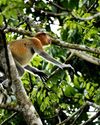
Saevus
Endangered EXOTICA!
The author takes us on an exotic ride into the forests of Malaysia, allowing us glimpses of the beauties of its wildlife!
3 mins
SAEVUS NOVEMBER 23 MARCH 24

Saevus
Mellifluous Magpie!
Immerse yourselves in the world of the musical and glorious Magpie Robin! The authors help acquaint us with this beautiful bird.
15 mins
SAEVUS NOVEMBER 23 MARCH 24

Saevus
Think Different!
The author brings to us the very real concern for the horses employed around pilgrimage sites in India.
4 mins
SAEVUS NOVEMBER 23 MARCH 24
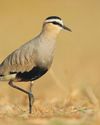
Saevus
Take Heed!
The authors make a case for the conservation of the rare and lesser-known Sociable Lapwing.
6 mins
SAEVUS NOVEMBER 23 MARCH 24
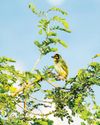
Saevus
Close Encounters!
The author introduces us to two amazing yet very different bird species, showing us the diversity of our ecosystems,
4 mins
SAEVUS NOVEMBER 23 MARCH 24
Translate
Change font size
